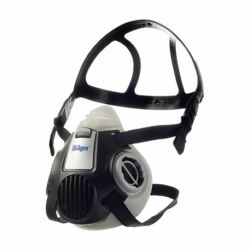Agrochemical and pesticides respirators
Why choose a phytosanitary treatment pesticides respirator? Pesticides are chemicals intended for the crops protection against pests, diseases, fungi, weeds, insects, etc. It is a generic term that covers insecticides, fungicides, herbicides, parasiticides and many other products categories. Today, pesticides are closely monitored and subject to several regulations. This makes the applications safer for users and the environment, and in most plant protection product directions, wearing a respiratory protection mask is strongly recommended. A user of plant protection products can be exposed to dust and particles (such as powders or seeds for example) but also to organic gases and vapors (such as carbamates or benzene derivatives for example), in particular while preparing the products when making the mix. Combined filtration type A2 (organic gases and vapors) and P3 (dust, solid or liquid particles such as aerosols) is recommended when using phytosanitary products. It offers a satisfactory level of protection for use in crop fields. Depending on the substances and methods of application (spraying, spreading), the phytosanitary treatment pesticides respirator should at least be a half-mask (nose and mouth protection) with an A2P3 filter. As a general rule, we will move more towards a full mask with A2P3 filtration ensuring effective protection of the respiratory tract and eyes, mucous membranes being very fragile and sensitive to this type of irritant substances. For arduous and long work, a powered respirator (with A2P3 filtration), more comfortable and less tiring, should be preferred.



